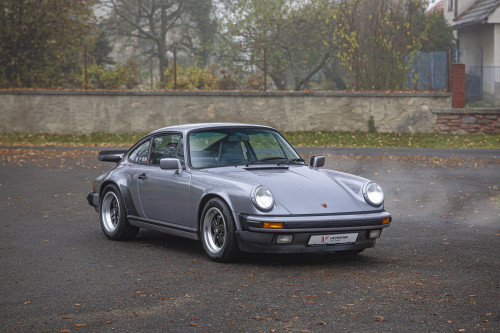The 1984 Mercedes-Benz 190E 2.3-16 is more than just a car; it's a symbol of Mercedes-Benz’s commitment to engineering excellence and a milestone in the history of performance sedans. Introduced in the early 1980s, the 190E 2.3-16 represented Mercedes' ambitious foray into the world of compact sports sedans, aiming to compete with the likes of BMW’s 3 Series, particularly the legendary E30 M3. What set the 190E 2.3-16 apart was not just its impressive engineering but also its unique place in motorsport history.
The Genesis of the 190E 2.3-16
The 190E, part of the Mercedes-Benz W201 series, was initially conceived as a compact executive car, designed to bring the luxury and engineering standards of Mercedes to a broader audience. However, the 190E 2.3-16 was a special variant that showcased the brand’s ability to blend luxury with high performance.
The "16" in the name refers to the 16-valve cylinder head, which was developed in collaboration with Cosworth, a renowned British engineering firm known for its work in motorsports. The 2.3-liter inline-four engine, paired with this advanced cylinder head, produced 185 horsepower—a significant figure for its time. This engine allowed the car to accelerate from 0 to 100 kmh in just under 8 seconds, with a top speed of around 230 kmh, making it one of the fastest sedans of its era.
Motorsport Pedigree: The Nürburgring and DTM
Mercedes-Benz didn’t just design the 190E 2.3-16 to be a fast road car; they intended for it to have a substantial impact on the racetrack as well. In 1983, before its official launch, the car made a dramatic debut at the Nürburgring. Mercedes hosted a one-make race featuring identical 190E 2.3-16s driven by some of the world’s best drivers, including Ayrton Senna, Niki Lauda, and Alain Prost. This race not only highlighted the car’s performance credentials but also marked the beginning of a successful motorsport career.
The 190E 2.3-16 went on to compete in the German Touring Car Championship (DTM), where it achieved considerable success. The car's balance, power, and handling made it a formidable competitor, laying the groundwork for Mercedes' future dominance in touring car racing.
Engineering and Design
The 190E 2.3-16 was more than just a powerful engine; it was a complete package. The car featured a more aggressive aerodynamic body kit compared to the standard 190E, including a distinctive rear wing and deeper front air dam, which improved downforce and stability at high speeds. The suspension was also reworked, with stiffer springs, anti-roll bars, and a lower ride height, ensuring that the car handled as well as it accelerated.
Inside, the 190E 2.3-16 was equipped with Recaro sport seats, a leather-wrapped steering wheel, and additional gauges to monitor the car’s vital statistics. It offered a driver-focused cockpit that was rare in Mercedes-Benz vehicles of the time, emphasizing the car’s dual nature as both a luxury vehicle and a sports sedan.
Legacy and Impact
The 1984 Mercedes-Benz 190E 2.3-16 remains an iconic vehicle, remembered not only for its engineering but also for its influence on the development of subsequent Mercedes-Benz performance models. It laid the foundation for the AMG-tuned Mercedes vehicles that would follow, and its success in motorsports helped establish Mercedes-Benz as a serious contender in the high-performance arena.
Today, the 190E 2.3-16 is highly sought after by collectors and enthusiasts who appreciate its combination of heritage, engineering excellence, and driving pleasure. It represents a time when Mercedes-Benz took bold steps to redefine what a compact sports sedan could be, blending luxury and performance in a way that few have been able to match since.
In essence, the 1984 Mercedes-Benz 190E 2.3-16 was not just a car; it was a statement of intent from one of the world’s most respected automakers. Its legacy continues to inspire the modern Mercedes-AMG lineup, reminding us of a time when Mercedes-Benz proved that even a compact sedan could become a performance legend.
This example left the factory in August 1984 destined for the Netherlands, where it was first registered on the 5th of October. It is finished in Blue-Black metallic paint with a Leather Anthracite interior. The seats were specified with perforated leather. Mainly due to the condition of the underbody, the car is sold as a project car.
Code Description
240 OUTSIDE TEMPERATURE INDICATOR
430 HEADREST IN THE REAR, LEFT AND RIGHT
466 CENTRAL LOCKING MECHANISM
470 ANTI-LOCK BRAKING SYSTEM (ABS)
504 OUTSIDE REARVIEW MIRROR, RIGHT; ELECTRICALLY CONTROLLED; L.H.D
543 SUN VISOR WITH VANITY MIRROR, ILLUMINATED, LEFT AND RIGHT
583 ELECTRIC WINDOW LIFTERS (FRONT DOORS)
600 HEADLAMP WIPER/WASHER
876 REAR DOOR CONTACTS AND LAMP ABOVE REAR WINDOW
| Production date | 08/1984 |
|---|---|
| Body Type | Sedan |
| Engine | 2.299 ccm, 185 PS, I4 |
| transmission | Manual |
| Steering | Left Hand Drive |
|---|---|
| Layout | Rear Wheel Drive |
| Color - exterior | Blue-Black metallic |
| Color - interior | Anthracite leather |
| Miles/Kilometers shown | 234.721 km |
|---|---|
| Chassis / VIN | WDB2010341A121715 |
| Location - Country | Czechia |
| Location - City | Jablonec nad Nisou |
4-door sedan body type; RWD (rear-wheel drive), manual 5-speed gearbox; gasoline (petrol) engine with displacement: 2299 cm3, advertised power: 136 kW / 182 hp / 185 PS (ECE), torque: 235 Nm; characteristic dimensions: outside length: 4430 mm, width: 1706 mm, wheelbase: 2665 mm; reference weights: base curb weight: 1230 kg; top speed: 230 km/h (143 mph) (declared by factory); accelerations: 0-60 mph 7.1 s, 0-100 km/h 7.5 s (declared by factory)

Písek, Czechia

Písek, CZ

Písek, CZ

Písek, CZ

Písek, CZ

Písek, CZ